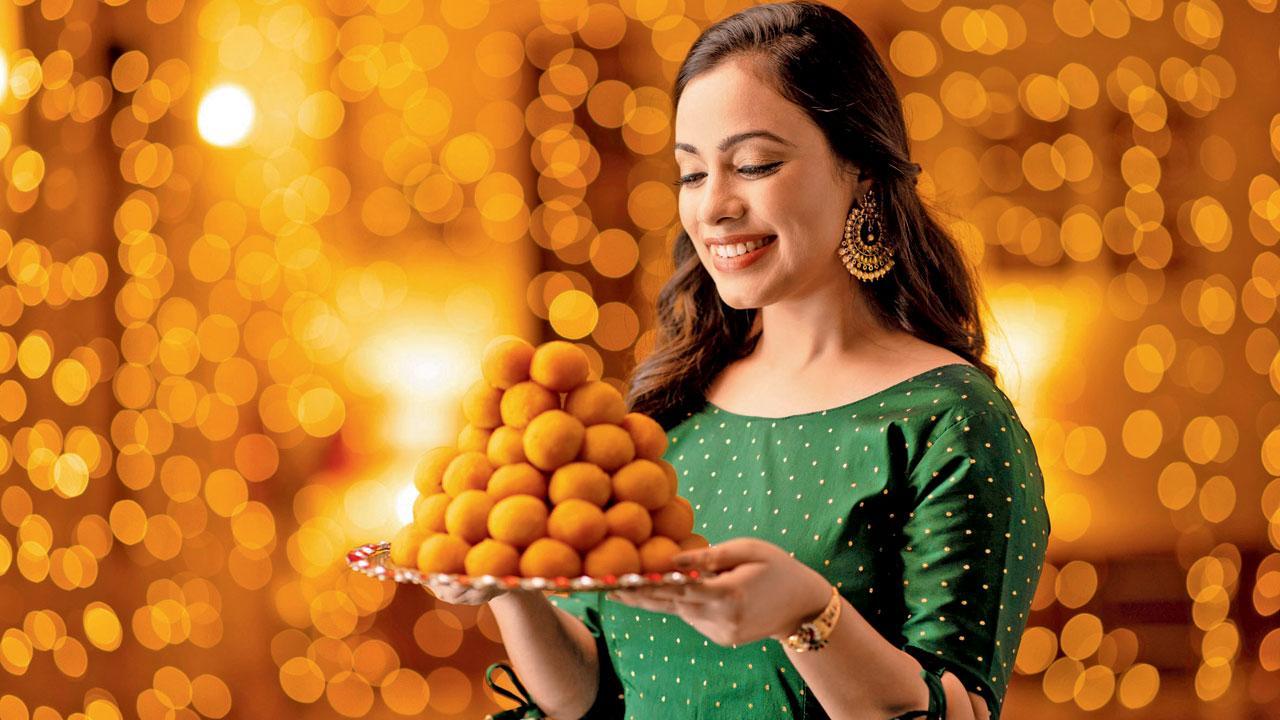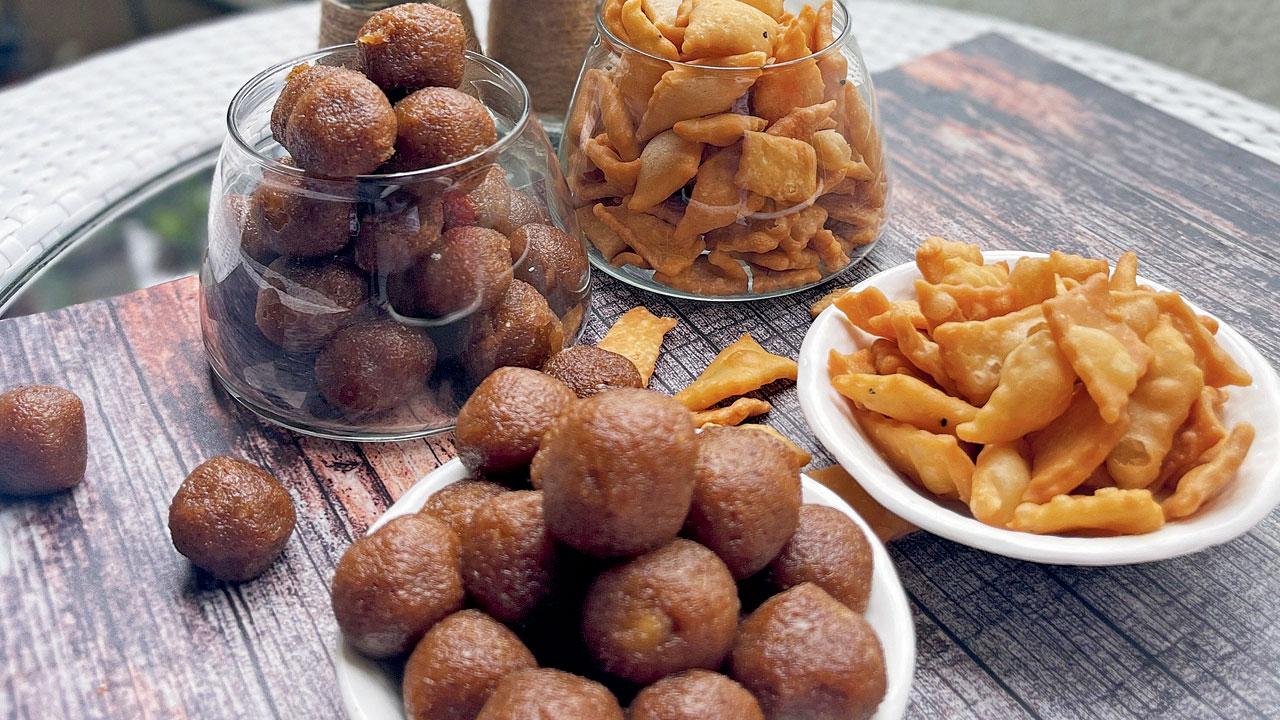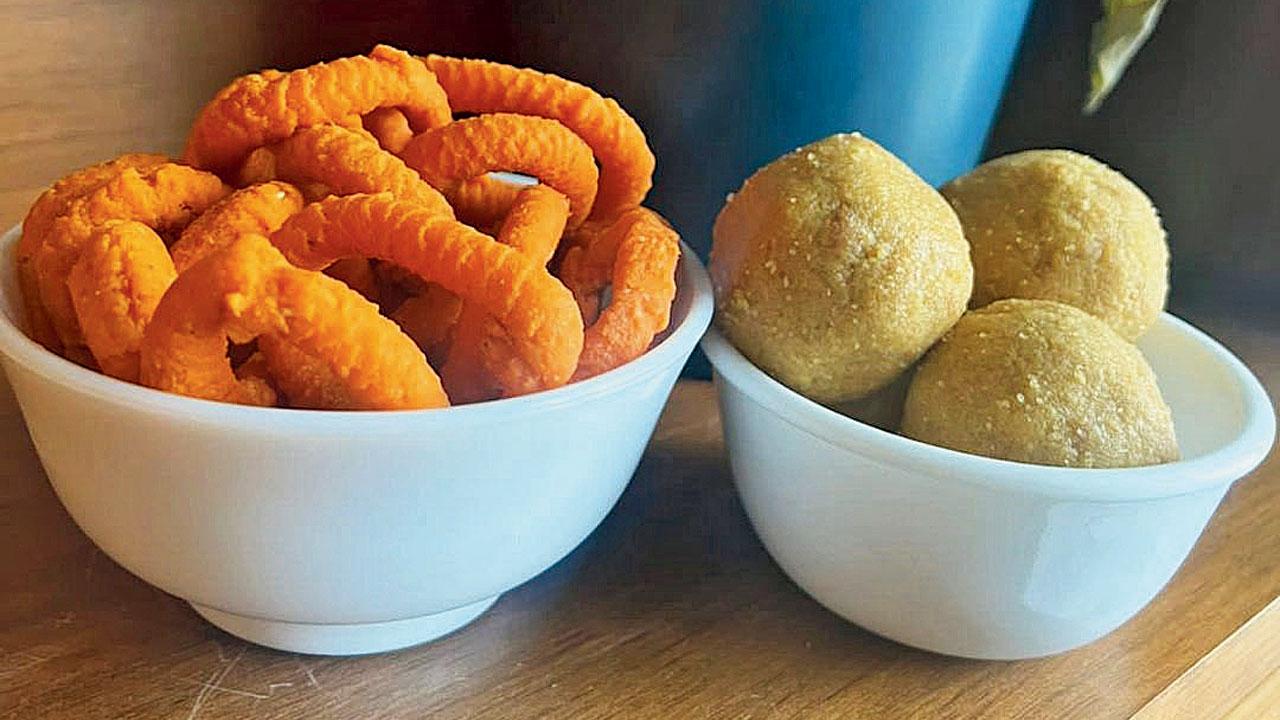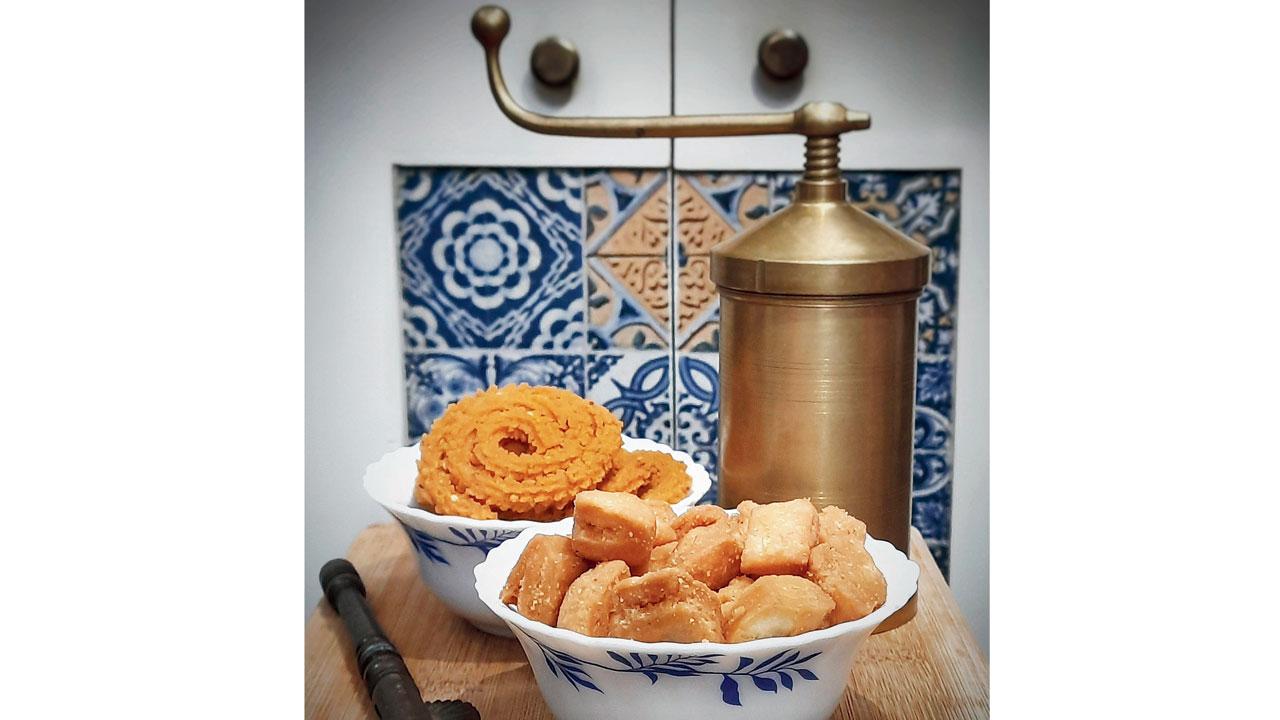Every sweet has a savoury paramour across various regions of India. Here’s how to bring time-tested jodis to your festive table

Representative Image
Diwali may be known for its line-up of traditional mithai, laddoo and barfi, but it is also incomplete without crunchy, deep-fried savouries that balance the palate. In Maharashtra, we call it farsan; in the north, it’s namkeen...every region has its own set of meetha-namkeen pairs that make Diwali evenings more delightful.
ADVERTISEMENT
Nimkis x Narus
West Bengal

In Bengal, the festive season starts with five days of Durga Pujo and stretches right into Diwali. Chef and author Ananya Banerjee tells us, “After Dashami [Dussehra] till Diwali, it’s a ritual for younger ones to seek blessings from elders in the family, so every household has guests arriving almost every day. Though the foods offered to guests differ from home to home, a few recipes that have stood the test of time are nimkis and narus, often served with tea during snack time.” Nimki is a diamond-shaped traditional tea-time snack that requires very few ingredients to make and has quite a few variations. For instance, kucho (small) nimki, elo jhelo nimki and regular nimki. “The elo jhelo nimki can also be dipped in sugar syrup to give it a sweet and salty taste. Narus are like laddoos and come in quite a few varieties—coconut naru, gurer naru [made with sugarcane jaggery] and tiler naru [made with sesame seeds],” Banerjee shares.
Ghughra x Chorafali
Gujarat

An interesting thought that Hetal Chheda, founder of Not A Chef, shares with us is what her mother would tell her during Diwali while making festive treats. “The richest, most time-consuming and tedious recipes were made only during festivals because consuming these in winter made them easy to digest,” she says. “In more modest times, people would wait for the office Diwali bonus to spend on expensive ingredients and celebrate by making such dishes.” Chheda’s favourite sweet, ghughra, has a crust of all-purpose flour filled with dry fruits, then deep-fried in ghee. “We knead the dough with ghee, and make the filling out of crushed almond, pistachio, walnut, and cashews, elaichi powder, nutmeg powder, charoli nuts and crushed sugar. Some add semolina to it, some add coconut [Gujaratis don’t] and fold it in different ways. These days, there are stencils to do the job that was once done by hand.” In savouries, there is chorafali, traditionally made of chora dal. “Since it is not very easily available, people mix besan and urad dal flour. We also add salt, baking soda and oil, and knead a very soft dough,” she says. “It takes a while and is taxing. These days, speciality stores stock ready-to-fry packets of chorafali that come from Gujarat. All you do is deep-fry them and sprinkle a mix of chilli powder, black salt and amchur. They are crisp and very delicate,” explains Chheda.
Rava Laddoo x Pappu Chekkalu
Andhra Pradesh

Home chef Sravani Mellacheruvu of The South Social says that to make fresh and delectable food during the festivities is believed to bring good luck. She loves pappu chekkalu, a classic traditional fried snack from Andhra Pradesh that’s crunchy for kids and addictive for grown-ups. “It’s that one snack that people tend to crave post-festive celebrations, and it can be stored for a long time. Made with spices, chana dal and rice flour, it is also called nippattu in Karnataka and thattai in Tamil Nadu,” says Mellacheruvu. It makes a perfect pair with the sweet rava laddoo made with jaggery, ghee, and nuts. “Simple and easy to make, most regions in India and carry slight variations of the basic recipe. It’s the melt-in-mouth yet grainy texture that makes this ladoo loveable. At our home, they vanish within minutes, and have to be hidden in containers to be served to guests, a tradition that has been followed for generations” adds Mellacheruvu.
Chakli x Shankarpale
Maharashtra

For Hema Nakwe, of Hema’s Veg Rasoi, growing up in a Maharashtrian family meant that Diwali was about making faraal—a mix of traditional sweet and savoury snacks including karanji, chakli, poha chiwda, shakarpale, and laddoo. While a faster life means most families prefer picking up readymade eats, eating around festivals still has a sense of joy surrounding it. From decorating the house to preparing sweets, Nakwe’s memories involve her mother roasting bhajani, a homemade flour of rice and lentils. Nakwe explains how rice and lentils are washed, air-dried, and dry roasted over low heat along with cumin and coriander seeds, cooled and ground to a fine flour. It is then seasoned with spices, sesame seeds, and carom seeds, and kneaded into a stiff dough that is placed in a chakli maker and carefully pressed out into spiral shapes that are deep-fried in hot oil till they turn crisp and golden brown. “Chakli making is an art and one has to be really patient with the process,” adds Nakwe.
With it comes deep-fried khuskhusit (Marathi for ‘flaky’) shankarpale that are Nakwe’s favourite. “Easy to make and quite delectable, these too can be prepared ahead of time and make for a perfect snack. Our mother would store them in airtight containers, meant to last for at least a month, but they’d be polished off within just a few days,” she laughs.
To order contact/log in to
Chef Ananya Banerjee: 9820400222
Hema Nakwe Hema’s Veg Rasoi: 8976764660
Sravani Mellacheruvu, The South Social: 8805024229
Hetal Chheda, Not A Chef: 7700095161
 Subscribe today by clicking the link and stay updated with the latest news!" Click here!
Subscribe today by clicking the link and stay updated with the latest news!" Click here!







